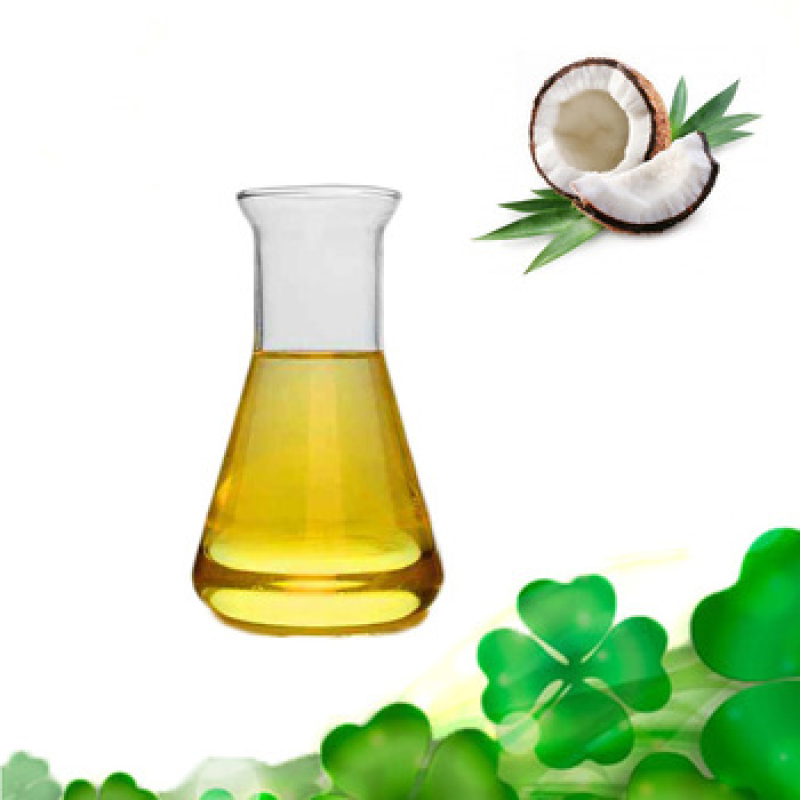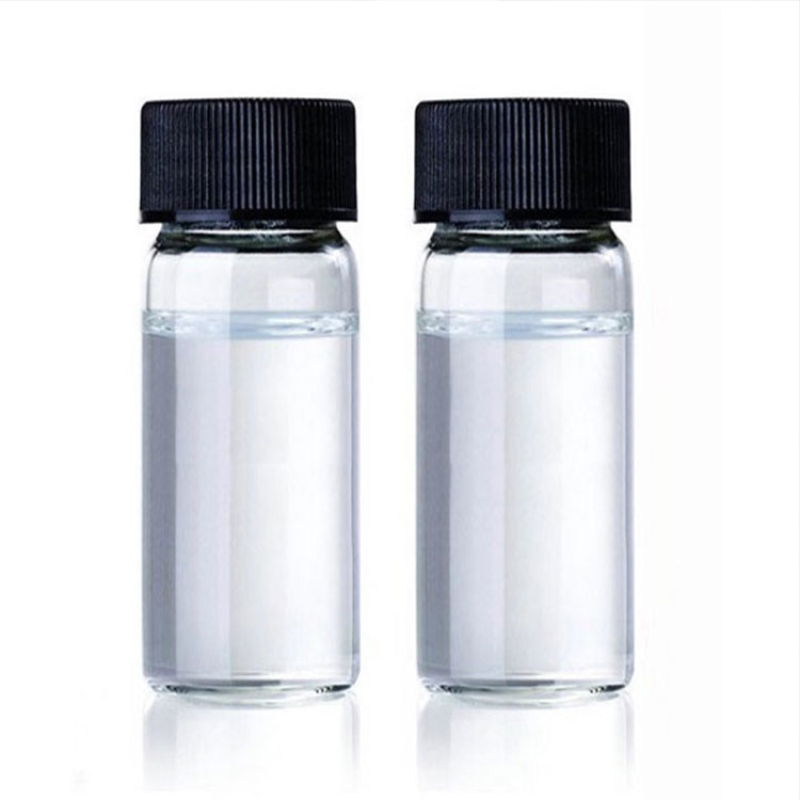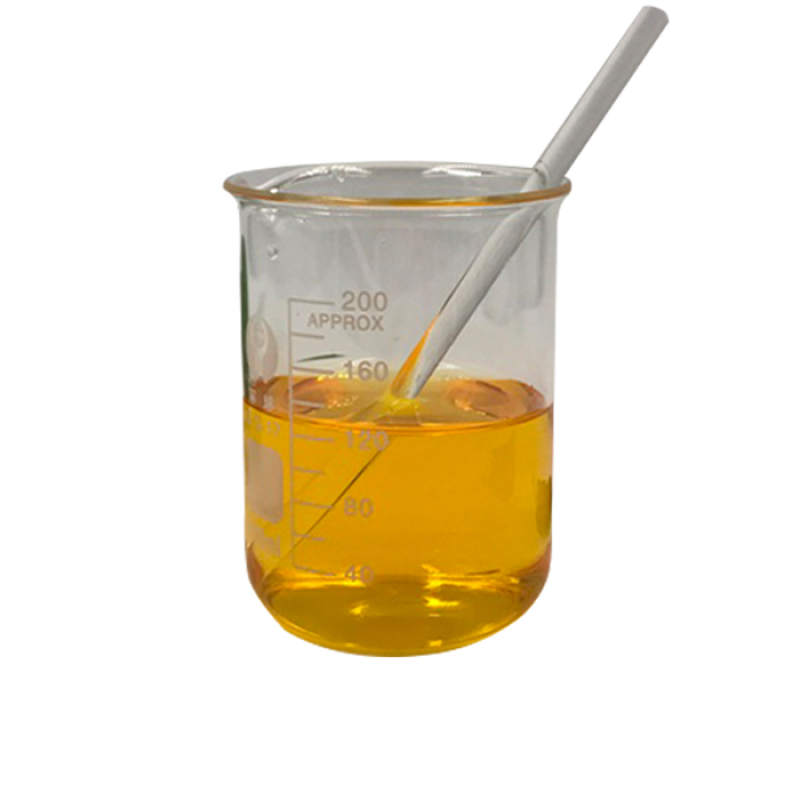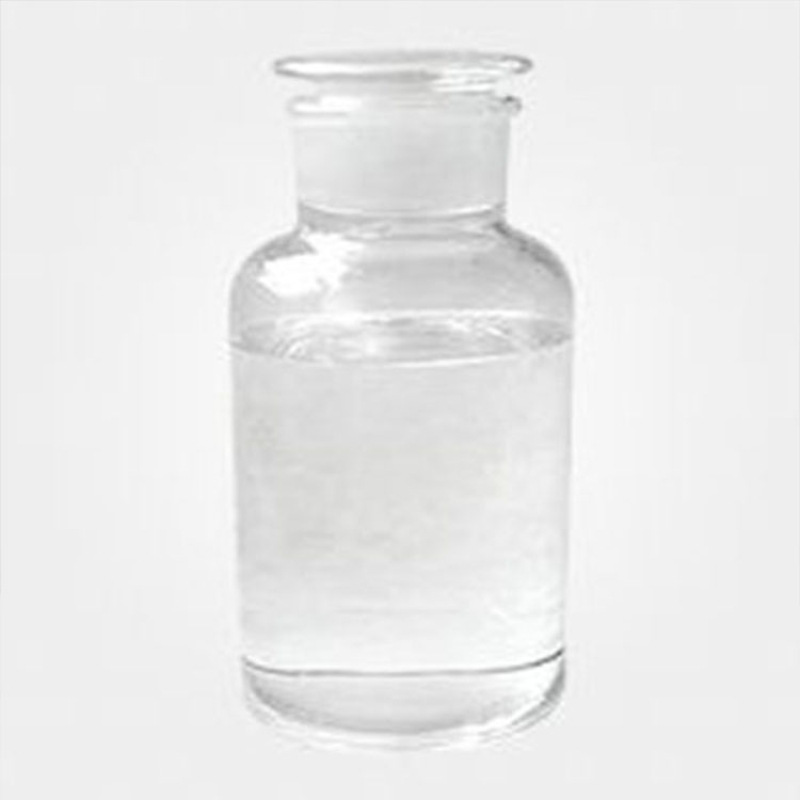Products Description of Vitamin E CAS#59-02-9Natural vitamin E is a brown-red or transparent light yellow oily liquid with a mild, special smell and taste. Easily soluble in ethanol, acetone, ether, chloroform or vegetable oil, almost insoluble in water. It has a high boiling point (250°C) and is stable to heat. It oxidizes when exposed to air and light and turns dark red. It has no calories and does not participate in human metabolism. Natural vitamin E has the functions of whitening spots, preventing skin aging, regulating endocrine, and preventing high blood pressure and blood clots.
Contact Now
Products Description of 1,1,2-Trimethyl-1H-benz[e]indole CAS#41532-84-7It is an extremely important alkaline heterocyclic intermediate for the synthesis of benzindolyl cyanine dyes, and is also a key intermediate for the synthesis of a variety of photovariable dyes.
Contact Now
Products Description of Direct Pigment Red 122 CAS#980-26-7Pigment Red 122 is an all-around pink, it belongs to Quinacridone chemistry, application covers all kinds of polymers. Comparable with Clariant Pink E and E 01. P.R.122 has higher tinting strength than pigment violet 19, it is with excellent resistance to immigration and heat stability. PR 122 dissolves in its medium and changes color accordingly at low concentrations.
Contact Now
Products Description of Solvent Blue 104 CAS#116-75-6Solvent blue 104 is used for packaging, decoration, paint, ink, and coloring of polyester, nylon, etc.Solvent Blue 104 Chemical PropertiesMelting point 236.5-237.5 °CBoiling point 639.5±55.0 °C(Predicted)density 1.220±0.06 g/cm3(Predicted)vapor pressure 0-0.001Pa at 20-25℃storage temp. Refrigerator, under inert atmospheresolubility Chloroform (Slightly)form Solidpka-0.26±0.20(Predicted)color Very Dark Blue to BlackDissociation constant0 at 30℃CAS DataBase Reference116-75-6(CAS DataBase Reference)E
Contact Now
Products Description of TRIDECETH-4 CAS#69011-36-5Condensation products of isomeric alcohol and ethylene oxideTRIDECETH-4 Chemical PropertiesBoiling point 290℃[at 101 325 Pa]density 0.907[at 20℃]vapor pressure 0.007Pa at 20℃Water Solubility 56mg/L at 20℃LogP4.73 at 25℃EPA Substance Registry SystemPolyethylene glycol mono(branched tridecyl) ether (69011-36-5) Safety InformationRIDADR 3082HazardClass 9PackingGroup IIIProduct Application of TRIDECETH-4 CAS#69011-36-5Isomeric alcohol ether E-1300 products are easily dispersed or soluble in water, a
Contact Now
Products Description of Diethyl Ethoxymethylenemalonate CAS#87-13-8Ethoxymethylene, also known as diethyl ethoxymethylenemalonate, is a colorless, transparent and viscous liquid. It is an important pharmaceutical intermediate and is widely used in the synthesis of medicines, pesticides and auxiliaries.
Contact Now
Products Description of 3,4-epoxycyclohexanecarboxylate CAS#2386-87-0The alicyclic epoxy resin 3,4-epoxycyclohexylmethyl 3,4-epoxycyclohexylcarboxylate overcomes the shortcomings of traditional bisphenol A epoxy resin, such as poor weather resistance, high temperature resistance, and poor impact resistance, and has received great attention from all walks of life.
Contact Now
Methylcyclohexane CAS#108-87-2Methylcyclohexane, an alkene, is a colorless liquid with a faint benzene-like odor. The smell thre-shold is 630 ppm (this is above the OEL). Molecularweight = 98.21; Specific gravity (H2O:1)= 0.77; Boilingpoint = 101℃; Freezing/Melting point= - 127℃; Vaporpressure= 37 mmHg at 20℃; Flash point= - 3.9℃ (cc),- 5.9℃ (oc); Autoignition temperature = 258℃. Explosivelimits: LEL= 1.2%; UEL = 6.7%.
Contact Now
Products Description of 1,4-Bis-[4-(3-acryloyloxypropyloxy)benzoyloxy]-2-methylbenzeneCAS#174063-87-71,4-Bis-[4-(3-acryloxypropoxy)benzoyloxy]-2-methylbenzene can be used in the field of photography to synthesize fast-erasable dyes, filter materials, charge transfer agents, etc.1,4-Bis-[4-(3-acryloyloxypropyloxy)benzoyloxy]-2-methylbenzene Chemical PropertiesBoiling point 733.5±60.0 °C(Predicted)density 1.219vapor pressure 0.003Pa at 25℃storage temp. Keep in dark place,Sealed in dry,Room Temperatureform powdercolor WhiteWater Solubility 5.3μg/L at 20℃Log
Contact Now
Products Description of 4-Hydroxycoumarin CAS#1076-38-64-Hydroxycoumarin is a coumarin derivative, one of the most versatile heterocyclic scaffolds, commonly used in the synthesis of various organic compounds. 4-Hydroxycoumarin has electrophilic and nucleophilic properties. 4-Hydroxycoumarin appears as slightly yellow needle-shaped crystals.
Contact Now
Products Description of Icaridin CAS#119515-38-7Icaridin, also known as Picaridin, was invented by the German company Saltigo. It is a broad-spectrum repellent with good mosquito repellent effect and long protection time. It is considered to be safer and less toxic than DEET, non-irritating to the skin, and has a higher overall level. It is also rated as the most effective mosquito repellent besides DEET by the Centers for Disease Control and Prevention of the United States. It is currently recognized as the best mosquito repellent chemical in Europe and the United States.
Contact Now
H3PO4 CAS#7664-38-2Welcome to our detailed product page for Phosphoric Acid, also known as Orthophosphoric Acid, with the chemical formula H3PO4 and registration number CAS#7664-38-2. This industrial grade acid is the cornerstone of various industries, providing a range of applications from agriculture to food processing.
Contact Now
Products Description of Phosphoric acidCAS#7664-38-2Phosphoric acid is also called orthophosphoric acid (molecular formula H3PO4). The pure product is a colorless, transparent, viscous liquid or orthorhombic crystal, odorless and very sour. 85% phosphoric acid is a colorless, transparent or slightly light-colored, viscous liquid. Melting point 42.35℃, specific gravity 1.70, high boiling point acid, miscible with water in any ratio, boiling point 213℃ (lose 1/2 water), then pyrophosphoric acid is generated. When heated to 300℃, it becomes metaphosphoric acid. Relative density 181.834.
Contact Now
Products Description of Sodium alginate CAS#9005-38-3Sodium alginate (CHONa), mainly composed of the sodium salt of alginate, is a polysaccharide biopolymer with many characteristics such as wide source, non-toxic, easy to degrade, and easy biocompatibility. Therefore, it has great application value in various industries such as medicine, food, packaging, textile industry, and biomaterials.Sodium alginate Chemical PropertiesMelting point 99 °Cdensity 1.0 g/cm3(Temp: 25 °C)FEMA 2014 | ALGIN (LAMINARIA SPP.
Contact Now
Products Description of Potassium Hydrogen Phthalate CAS#877-24-7Potassium Hydrogen Phthalate is an organic compound that appears as a white crystalline powder. It is stable in the air, soluble in water, and slightly soluble in alcohol.
Contact Now
Products Description of KCL CAS#7447-40-7Potassium chloride is an important fertilizer for plant growth. It has a fast fertilizer effect and can be absorbed by the soil. It is not easy to lose. Applying an appropriate amount of potassium fertilizer can make the stems of crops grow firm, prevent lodging, promote flowering and fruiting, and enhance the ability to resist drought, cold, diseases and pests. Therefore, it is of great significance to agricultural high yield.
Contact Now
Products Description of LITHIUM METASILICATE CAS#10102-24-6Lithium silicate is a kind of water-soluble silicate. It is an odorless, tasteless transparent liquid. It is soluble in water and alkaline solutions, but insoluble in alcohols and organic solvents. Since the radius of lithium ions is much smaller than that of sodium and potassium ions, lithium silicate aqueous solution has some unique properties. It reacts chemically with acid like sodium water glass to form dioxide gel.
Contact Now
Products Description of Cobalt bis(2-ethylhexanoate)CAS#136-52-7Purple liquid.Cobalt bis(2-ethylhexanoate) Chemical Propertiesdensity 1.002 g/mL at 25 °Cvapor pressure 5Pa at 25℃Fp 104 °Fform liquidcolor purpleWater Solubility 40.3g/L at 20℃CAS DataBase Reference136-52-7(CAS DataBase Reference)EPA Substance Registry SystemHexanoic acid, 2-ethyl-, cobalt(2+) salt (136-52-7)Safety InformationHazard Codes Xn,NRisk Statements 10-36/37/38-40-43-66-65-62-50/53Safety Statements 26-36/37-62-61RIDADR UN 1268 3/PG 3WGK Germany&nb
Contact Now
Products Description of Antioxidant 1330 CAS#1709-70-2Hindered phenol antioxidant 330 is a white crystalline powder with a melting point above 244°C. It is insoluble in water. Its solubility in some solutions at 18°C (g/100g solvent) is: benzene 20, dichloromethane 31.9, methylcyclohexane 1.7, methanol 0.2, isopropanol 0.1.
Contact Now
Products Description of Antioxidant 1330 CAS#1709-70-2Hindered phenol antioxidant 330 is a white crystal powder with a melting point above 244°C and is insoluble in water. The solubility (g/100g solvent) in certain solutions at 18°C is: benzene 20, methylene chloride 31.9, methylcyclohexane Alkane 1.7, methanol 0.2, isopropyl alcohol 0.1.
Contact Now
Products Description of 4-Chloromethyl styrene CAS#1592-20-74-Vinylbenzyl chloride is an organic compound with the formula ClCH2C6H4CH=CH2. It is a bifunctional molecule, featuring both vinyl and a benzylic chloride functional groups. It is a colorless liquid that is typically stored with a stabilizer to suppress polymerization.In combination with styrene, vinylbenzyl chloride is used as a comonomer in the production of chloromethylated polystyrene. It is produced by the chlorination of vinyltoluene.
Contact Now
Products Description of Ammonium sulfate CAS#7783-20-2Ammonium sulfate, also known as ammonium sulfate, is the earliest nitrogen fertilizer produced and used at home and abroad. It is usually regarded as a standard nitrogen fertilizer with a nitrogen content of 20% to 30%. Ammonium sulfate is a salt of strong acid and weak base, and its aqueous solution is acidic. Ammonium sulfate is a nitrogen fertilizer and an acidic fertilizer among inorganic fertilizers. Long-term single use will cause soil acidification and hardening, which needs to be improved.
Contact Now
Products Description of 4,4'-Diphenylmethane diisocyanate CAS#101-68-8Pale yellow molten solid with a strong pungent odor.
Contact Now
Products Description of 4,4'-Diaminodiphenylsulfone CAS#80-08-0Dapsone is a sulfone antibacterial drug with a strong antibacterial effect on Mycobacterium leprae. Its preparations have been widely used in the treatment of leprosy. As the first choice for the treatment of leprosy, dapsone acts on the dihydrofolate synthase (DHPs) of bacteria, interferes with the synthesis of folic acid, and affects the synthesis of protein by bacteria.
Contact Now



![1,1,2-Trimethyl-1H-benz[e]indole CAS#41532-84-71,1,2-Trimethyl-1H-benz[e]indole CAS#41532-84-7](https://sdluxicdn.huazhi.cloud/cdn/ff/vCdZL5hgJePL41mQiSGZKs6PuHZLWAvoY27pKNwf9gM/1718385350/public/styles/chanpinzhutu/public/2024-06/%E4%BA%A7%E5%93%81%E5%9B%BE%20%282%29_0.jpg?itok=0rtELXYW)






![1,4-Bis-[4-(3-acryloyloxypropyloxy)benzoyloxy]-2-methylbenzeneCAS#174063-87-7](https://sdluxicdn.huazhi.cloud/cdn/ff/UzaxHqC7dqMBX0gCNrVwnr0zZlxBJGLCf_1pR8RV7U8/1719438243/public/styles/chanpinzhutu/public/2024-06/%E7%99%BD%E8%89%B2%E7%B2%89%E6%9C%AB%20%285%29_15.jpg?itok=9zTdC24L)
























